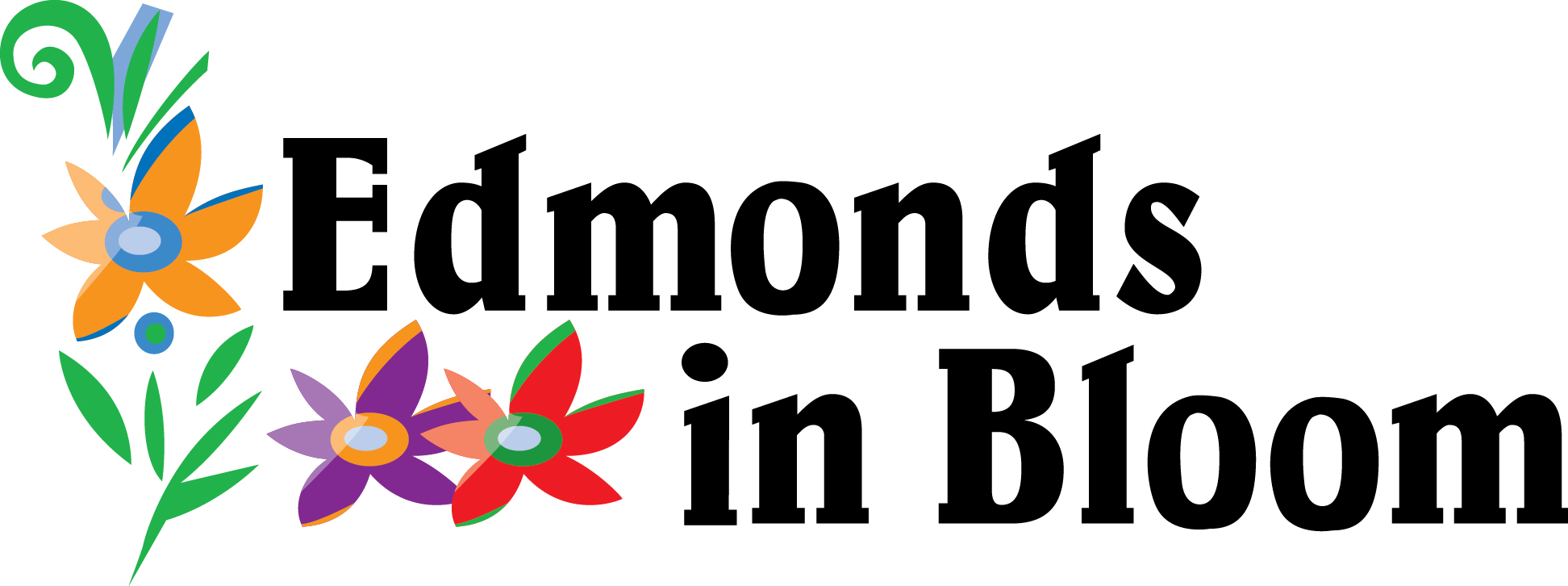Dunn Gardens
Past
This history is excerpted from David Streatfield’s 2005 article in Pacific Horticulture. Compiled by Gil Joynt.
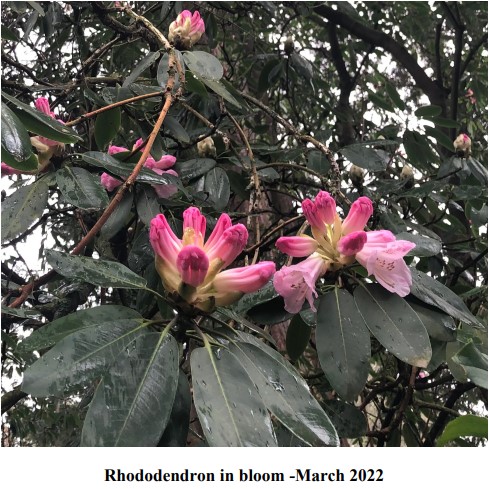 the property, in 1945, by Dunn’s four youngest children also serves as an instructive example of how to maintain over time the design integrity of an important historic landscape.
the property, in 1945, by Dunn’s four youngest children also serves as an instructive example of how to maintain over time the design integrity of an important historic landscape.Arthur Dunn moved to Seattle in 1889 from his birthplace in Cape Vincent, New York, and became a founding partner in a successful salmon-processing company with plants in Seattle and Blaine. Around 1912 he contemplated developing a summer place, then a common practice among affluent families, either on Bainbridge Island or in The Highlands, adjacent to the Seattle Golf Club. The latter’s building restrictions, combined with his desire to keep a cow and other animals, persuaded Dunn to purchase from his friend, John B Agen, the southern half of a twenty-acre parcel of logged-off land in an undeveloped rural area in 1914.Dunn hired the distinguished architect Carl Gould, of the firm Bebb and Gould, to design“a cheap cottage.” He commissioned The Olmsted Brothers to site the cottage and prepare a landscape plan. Agen had already hired the firm,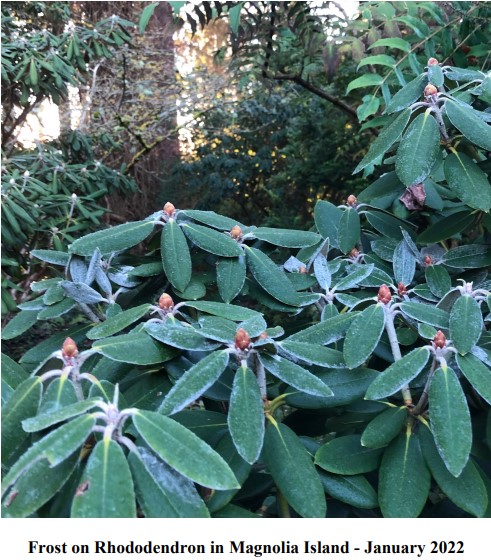 so it made sense to jointly plan the properties. On February 29, 1916, James Dawson, a partner in The Olmsted Brothers office, presented the landscape plan. Arthur Dunn, an enthusiastic and knowledgeable gardener, implemented Dawson’s design using his planting plan as a guide for herbaceous borders, perennial gardens, and screen plantings of deciduous and evergreen shrubs. As a summer retreat, this country place gave immense pleasure to the Dunn’s and their five children for decades. Following Arthur Dunn’s death in 1945, the estate was subdivided among his four younger children.
so it made sense to jointly plan the properties. On February 29, 1916, James Dawson, a partner in The Olmsted Brothers office, presented the landscape plan. Arthur Dunn, an enthusiastic and knowledgeable gardener, implemented Dawson’s design using his planting plan as a guide for herbaceous borders, perennial gardens, and screen plantings of deciduous and evergreen shrubs. As a summer retreat, this country place gave immense pleasure to the Dunn’s and their five children for decades. Following Arthur Dunn’s death in 1945, the estate was subdivided among his four younger children.
Dunn Gardens represents a significant example of the Olmsted firm’s approach to landscape design in the Pacific Northwest. The garden-within-the-Gardens created by Arthur Dunn’s second son, Edward, is owned and controlled by a trust, while deed covenants over the adjoining parcels. This protects the principal remaining part of the original Olmsted design. The three properties are managed as a single unit to ensure a sense of visual continuity. Their continuing presence is a remarkable testament to the original vision, at a time when many larger residential properties from the early twentieth century have been subdivided.

Present
By Carol Miranda
Almost seven acres of garden tucked into a suburban neighborhood at the northern edge of Seattle, Dunn Gardens offers winding trails through towering Douglas Firs,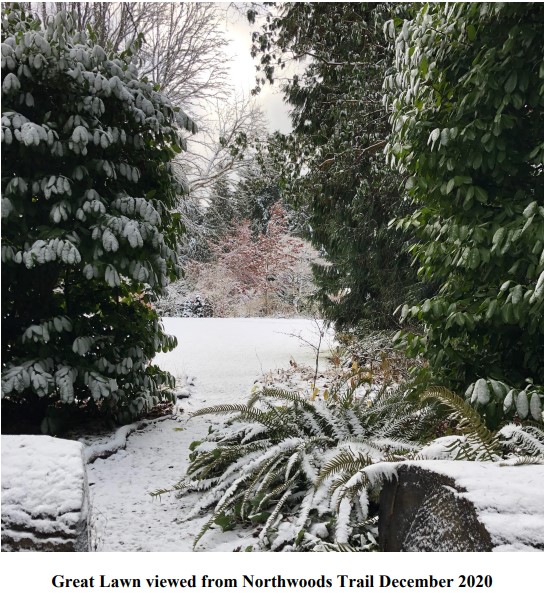 curving lawns, and flowering shrubs and perennials. Walking down the gravel drive drops your blood pressure and elevates your mood.
curving lawns, and flowering shrubs and perennials. Walking down the gravel drive drops your blood pressure and elevates your mood.
From its establishment as a non-profit historic garden in the 1990’s until mid-pandemic, visitors were only permitted in the gardens on a guided tour. For the safety of guests and tour guides during the pandemic, Dunn Gardens began allowing people to take self-guided tours.
This new policy was so popular that memberships and visits increased dramatically. Today the gardens are open 9-4 Monday through Saturday year-round.
What was then a country estate for a wealthy family is now a peaceful escape for the many garden lovers in Seattle, a place to celebrate micro weddings or have a picnic with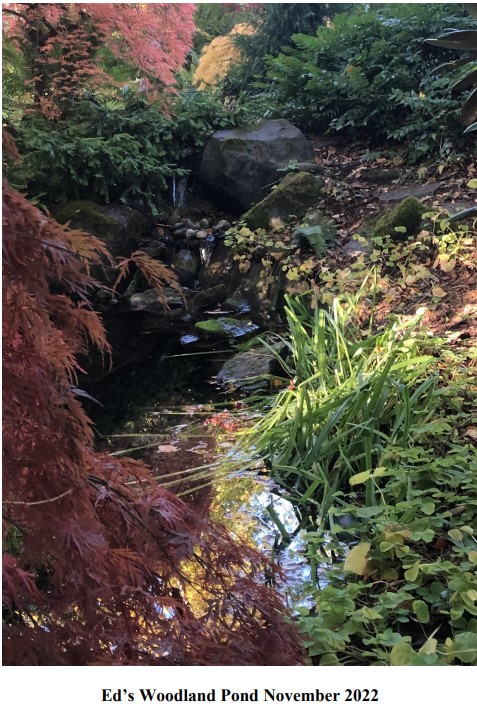 friends, and a chance to learn a little history or to keep up on gardening trends with garden related classes and lectures.
friends, and a chance to learn a little history or to keep up on gardening trends with garden related classes and lectures.
It offers an opportunity to see the 100+ year old deciduous trees planted by Arthur Dunn, and the curving lawns surrounded by a mix of native and exotic plants and the extant 150+ year old Douglas firs as designed by the Olmsted firm.
The gardening trends of the mid to late 1950’s are showcased by the naturalistic, woodland style gardens and ponds developed by Ed Dunn in the area designated as the garage and vegetable garden on the original Olmsted firm plan.
Arthur’s daughter Dorothy and her husband Emory commissioned a small Japanese garden designed by Fujitaro Kubota and replaced a rose garden with a sweep of heather after building a house on their portion of the property.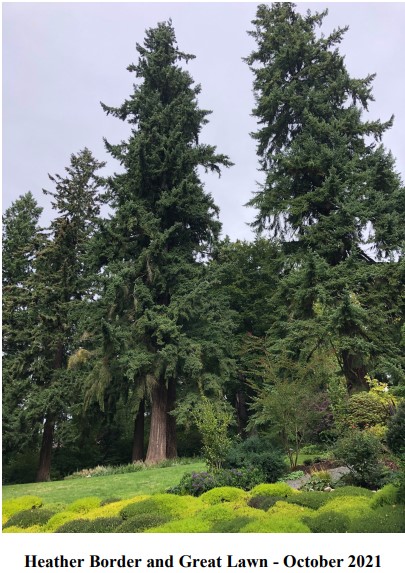
Tucked into the natural ravine that was preserved by the Olmsted plan, is a rough trail through our native sword ferns and vine maples; a little bit of the history of this area long before the Dunns and the Olmsted firm set eyes on the property.
Thanks to Ed’s love of our native spring wildflower, the Erythronium revolutum, the garden has stunning displays of these tiny flowers in April.
Also not to be missed is the February bloom of snowdrops and cyclamen, Ed Dunn’s beloved Rhododendrons blooming in May and the fall color of the many deciduous trees throughout the garden.
The small endowment set up when the E. B. Dunn Historic Garden Trust was established not being enough to cover day-to-day operations, small events and classes are held throughout the year to engage our community and raise funds to keep the gardens looking beautiful.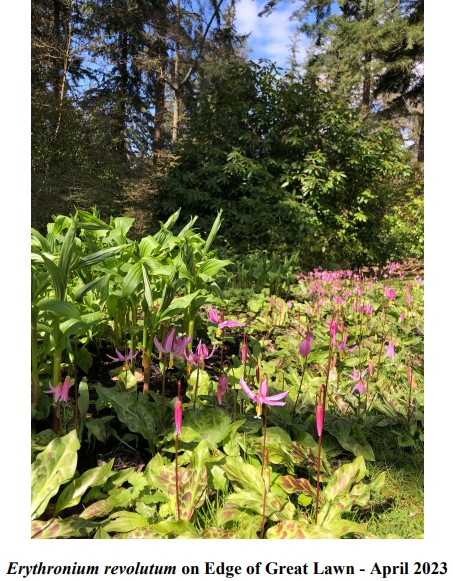
Nurtured and shepherded in an eco-friendly fashion since 1915 by a number of gardeners, arborists, designers, and curators, including Charles Withey and Glenn Price, and with
the help of many volunteers, Dunn Gardens is thriving today, both as a place and as a community. It has taken the hard work and generosity of a host of people to preserve this little bit of peace, beauty and history for today and for the future.
Future
By Carolyn Cox
Preservation, Engagement, and Community serve as driving principles as we enter our second century of being a garden. The bones of the original Olmsted design guide all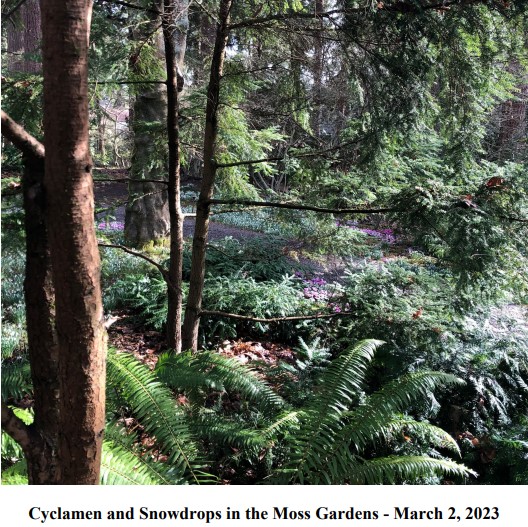 changes, whether it be planting for climate change, replacing an aged tree, or sprucing up a woodland path. But as times change, so to must the Gardens:
changes, whether it be planting for climate change, replacing an aged tree, or sprucing up a woodland path. But as times change, so to must the Gardens:
- From its establishment as a non-profit historic garden in the 1990’s until mid-pandemic, visitors were only permitted in the Gardens on a guided tour. Covid
provided the perfect opportunity to provide a haven for those seeking a safe way to meet with friends. Today the gardens are open 9am-4pm, Monday through Saturday year-round. - We hope to educate the community on the negative impact of gas-powered equipment, as we move towards replacing our petroleum-powered equipment with electric landscaping equipment.
- Currently we’re taking a deep dive into our pre-Olmsted history by embarking on a project to create
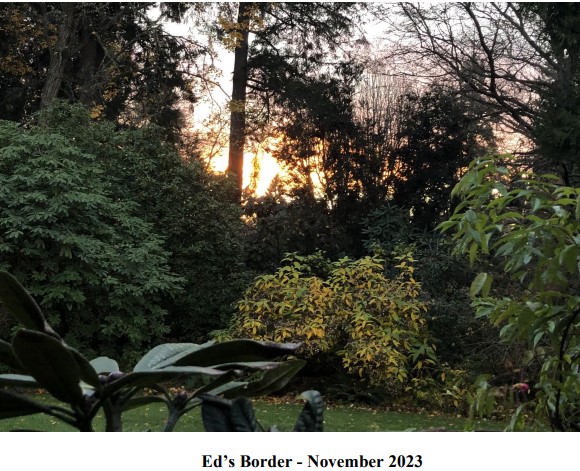 an interpretive trail showcasing native plants of importance to the Duwamish Peoples, the original inhabitants of the area. The project will include plant labeling in both Latin and Lushottseed. The aim is to deepen the understanding of the cultural heritage of the PNW and inspire visitors to explore and appreciate the native traditions and heritage that have shaped the landscape.
an interpretive trail showcasing native plants of importance to the Duwamish Peoples, the original inhabitants of the area. The project will include plant labeling in both Latin and Lushottseed. The aim is to deepen the understanding of the cultural heritage of the PNW and inspire visitors to explore and appreciate the native traditions and heritage that have shaped the landscape.
In summary, Dunn Gardens stands as a testament to the evolution of garden design in the
Pacific Northwest and the preservation of historic landscapes. Through community engagement and partnerships, Dunn Gardens continues to serve as a valuable resource for all who visit
